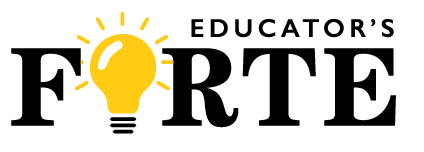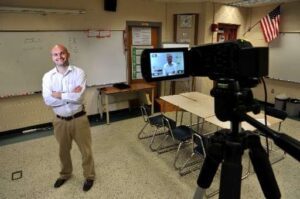Teaching is an ever-evolving profession, and effective educators understand the importance of continuous growth and self-improvement. Reflective practice, the art of looking back on your teaching experiences, analyzing them, and using insights to improve, is a powerful tool in a teacher’s arsenal. In this blog, we’ll explore the significance of reflective practices for teacher growth and how you can contribute to more effective, student-centered classrooms.
Reflective practice, in essence, involves you taking a step back to evaluate your teaching methods, strategies, and interactions with students. It’s a process of introspection that allows you to gain a deeper understanding of what works and what doesn’t in your classroom.

Journaling
Journaling is very popular in the self-development realm, so it makes sense that journaling can be effective in the professional development realm. Keeping a teaching journal can be a valuable way to document daily experiences, challenges, successes, and personal observations. By revisiting your journal entries, you can identify patterns and make well-informed decisions about adjusting your teaching strategies.
If you don’t know where to start, begin by journaling about these questions:
- What teaching strategies did I use today that seemed particularly effective in engaging my students? Why do I think they worked well?
- Were there any classroom challenges or student behaviors that I found difficult to manage today? What strategies did I use to address them, and what could I have done differently?
- Did I notice any patterns in my students’ reactions to the lesson content or activities? How can I adjust my teaching methods to better meet their needs and interests?
- What moments or interactions stood out to me today? How did these moments impact the overall classroom atmosphere and learning experience?
- How did I feel at the beginning and end of the school day? Did any specific events or experiences influence my mood and energy levels, and how might they have affected my teaching?
These reflective questions can serve as a starting point to delve into your daily experiences, identify areas for improvement, and gain deeper insights into your teaching practices. Journaling can be an essential part of your professional growth and development.

Peer Observation
Reflective practices can also include collaboration and peer observation. By discussing your experiences with colleagues, you can gain fresh perspectives and alternative strategies. Observing other teachers in action can provide valuable insight into different teaching styles and approaches. The exchange of ideas fosters a culture of learning and growth within the school community.
If you have begun journaling, you can decide on an area that you want to develop. Then reach out to your colleagues to find someone that has strategies that can share for that area. It is important to go into those peer observations with some kind of form, so you are intentional with your time. Click the link below to find an example.
Student Feedback
The feedback loop created by reflective practices help you stay attuned to your students’ needs. By listening to student feedback, you can identify areas for improvement and make adjustments accordingly. This fosters a more student-centered and responsive teaching approach.
Getting feedback from your students does not have to be time consuming. Every quarter or semester you could ask your students a few questions like the ones listed below. You could ask them to write their answers down, put it in a form, or just have a class discussion about them.
Questions to ask students:
- What teaching methods or classroom activities do you find most engaging and effective? (Provide some examples of things you’ve done if they struggle coming up with an answer.)
- Are there any aspects of the class that you find less engaging or less effective? If so, please explain.
- How well do you feel your questions or concerns are addressed when you need assistance or clarification?
- Do you feel the classroom environment is conducive to active learning and participation? What could be done to improve it? (Be ready with suggestions.)
- What topics or areas of the subject matter would you like to see covered or discussed more in class?
Video Reflection
Video reflection is a powerful tool for fostering self-awareness and professional growth. By recording your teaching sessions and later reviewing the footage, you gain a unique perspective on your instructional practices, classroom dynamics, and interactions with students. This process allows you to critically assess your teaching methods, identify areas for improvement, and make data-driven decisions about your approach. Video reflection not only highlights strengths but also reveals opportunities for growth, enabling you to refine your techniques, experiment with new strategies, and tailor your instruction to better meet the diverse needs of your students. It serves as a reflective mirror, helping you fine-tune your skills, boost student engagement, and ultimately elevate the quality of education you provide.
To reflect on the video, you could use the same questions from the journaling section, or you could ask these questions:
- How did I engage my students?
- Did I effectively communicate the learning objectives?
- How did I manage classroom dynamics and behavior?
- How did I differentiate instruction for diverse learners?
- What was the overall student response and engagement in the lesson?
Another option could be to pick an area that you want to focus on in the video. For example, if through your journaling, you realize that student engagement is down during the second half of your day. You could record part of the morning time and part of the late afternoon, then see what you do differently that could be causing student engagement to be down. By having a focus, you can make decisions that can lead to lasting change.
Reflective practices are not only about self-assessment but also about fostering a culture of continuous improvement. When you regularly engage in reflection, you become more adaptable, resilient, and skilled at responding to the ever-changing needs of your students. In the end, it’s the students who benefit most from teachers who are committed to their own growth, creating a more dynamic and effective learning environment.


